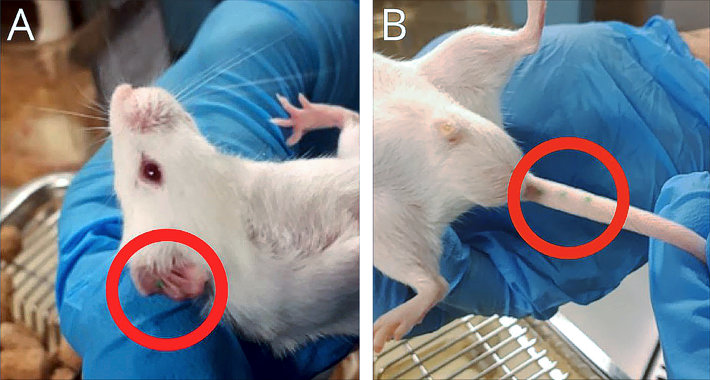Evaluation of two alternative methods to ear tagging for rodent identification
DOI:
https://doi.org/10.31687/SaremNMS22.11.1Keywords:
ecology, marks, rodents, tattoosAbstract
One of the most used methods to identify rodents in field studies is the placement of ear tags; however, it is common for individuals to lose them. In this paper, we explore alternative marking forms. Ear punching, finger, tail, and ear tattoos were performed on laboratory mice. The tattoos remained in all individuals and no adverse effects appeared. The perforations showed redness and/or fall of the cartilage inhibited the wound. The application of the tattoo technique in wild rodents corroborated the feasibility of the methodology and the visibility of the marks.
References
Cover, C. E., C. M. Keenan, & G. E. Bettinger. 1989. Ear-tag–induced Staphylococcus infection in mice. Lab Animal 23:229–233. https://doi.org/10.1258/002367789780810482.
Donovan, J., & P. Brown. 2004. Animal identification. Current Protocols in Neuroscience 4:4E. https://doi.org/10.1002/0471142301.nsa04es27.
National Research Council. 2010. Guide for the care and use of laboratory animals, 8ª edición. The National Academies Press. Washington, EEUU. https://doi.org/10.17226/13250.
Pavone, L. V, & R. Boonstra. 1985. The effects of toe clipping on the survival of the meadow vole (Microtus pennsylvanicus). Canadian Journal of Zoology 63:499–501. https://doi.org/10.1139/z85-072.
Percie du Sert, N., et al. 2020. Reporting animal research: Explanation and elaboration for the ARRIVE guidelines 2.0. PLOS Biology 18. https://doi.org/10.1371/journal.pbio.3000411.

Downloads
Published
How to Cite
Issue
Section
License
Copyright (c) 2022 Santiago R. Carrizo, Malena Rospide, Isabel Elisa Gómez Villafañe

This work is licensed under a Creative Commons Attribution-NonCommercial 4.0 International License.

